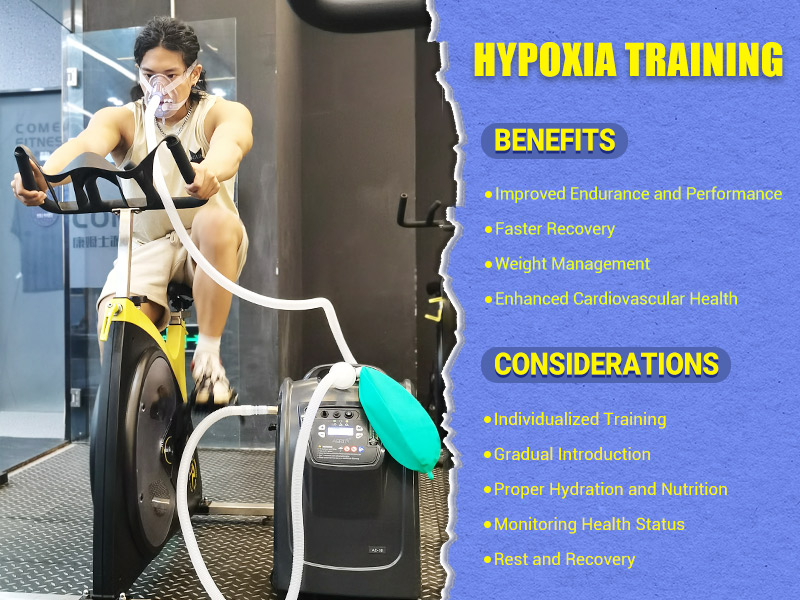Benefits
Improved Endurance and Performance: By training in a hypoxic environment, athletes can increase their endurance and performance by stimulating the body to adapt to low oxygen levels.
Faster Recovery: Hypoxia training has been shown to reduce recovery time between intense workouts, allowing athletes to train more frequently and effectively.
Weight Management: Studies suggest that altitude training may aid in weight management by increasing the body's metabolism, even at rest.
Enhanced Cardiovascular Health: The body's response to low oxygen levels improves oxygen uptake and delivery, blood lactate removal, and buffering of hydrogen ions, all of which contribute to better cardiovascular health.
Considerations
Individualized Training: Not all athletes respond to hypoxia training in the same way. It's essential to work with a coach or healthcare professional to develop an individualized training plan.
Gradual Introduction: Start with lower altitudes and gradually increase the simulated height to avoid overexertion and potential health risks.
Proper Hydration and Nutrition: Ensure you are well-hydrated and nourished before, during, and after hypoxia training sessions.
Monitoring Health Status: Keep track of your health status, including heart rate, blood pressure, and any unusual symptoms, and consult a doctor if necessary.
Rest and Recovery: Allow sufficient rest and recovery time between training sessions to avoid overtraining and potential injuries.

